Beat the Icon: Can Any Knife Challenge the Legendary KA-BAR?

Today we’re tackling a big question: can any modern knife truly “beat” the iconic KA-BAR? After all, this knife isn’t just a blade; it’s a symbol of American military history, manufacturing might, and utilitarian design.
The KA-BAR fighting/utility knife has undeniably earned its place as one of the most recognizable fixed blades in the world. But does popularity equal supremacy? Here at the KnifeCenter, we’re always looking for the best tools for the job, so let’s see how the KA-BAR stacks up against the competition today. Does any blade have what it takes to unseat the champion? From faithful reproductions to modern takes on the tactical knife concept, let’s dive in and see how they stack up.
The KA-BAR: A Legend Forged in War
History and Origins
The KA-BAR’s story starts during World War II. Formally adopted in 1942 as the Mark II Fighting Knife, it quickly became a mainstay for US troops. Interestingly, “KA-BAR” isn’t just a generic term for this type of knife, it’s a brand name. While KA-BAR became the most well-known manufacturer, other companies also produced the Mark II Fighting Knife to support the war effort. Vintage Camillus versions can be found, and there are current versions made by companies like Case. But, much like Kleenex becoming synonymous with facial tissues, the KA-BAR name stuck with this incredibly successful knife design. Today, KA-BAR offers special edition and commemorative versions that celebrate its storied history.
Design and Features
So, what makes the KA-BAR so iconic? Essentially, it’s a beefed-up version of the stacked leather hunting knives that were popular at the time, scaled up for military use. The classic KA-BAR features a 7-inch blade, originally made from various carbon steels. Modern versions use 1095 CV steel. The blade boasts a classic clip point shape with a deep swedge, creating a very sharp tip. A fuller, also known as a blood groove, runs along both sides, reducing weight and improving balance.
The handle is made of stacked leather, and modern versions feature an oval shape that prevents twisting in the hand and provides a secure grip. Grooves are cut into the handle for added traction. It is worth noting that historical examples, like the Case version, often have a more rounded handle. At the butt of the knife, a rounded plate secures the full-length stick tang, which was often used as a makeshift hammer. The stamped metal crossguard is another defining feature. While not overly large, it effectively prevents your hand from sliding onto the blade and provides protection against an opponent’s weapon.
Overall, the KA-BAR offers a great combination of reach and penetration power without being overly heavy. It has a certain liveliness that many modern knives struggle to replicate. The steel isn’t super thick, but it’s sturdy enough to survive both frontline combat and nearly a century of use. The modern sheath is a classic stitched leather design with a drop loop and retention strap. Wartime versions sometimes used different sheath materials, including Bakelite.
KA-BAR’s Own Contender: The KA-BAR D2 Extreme
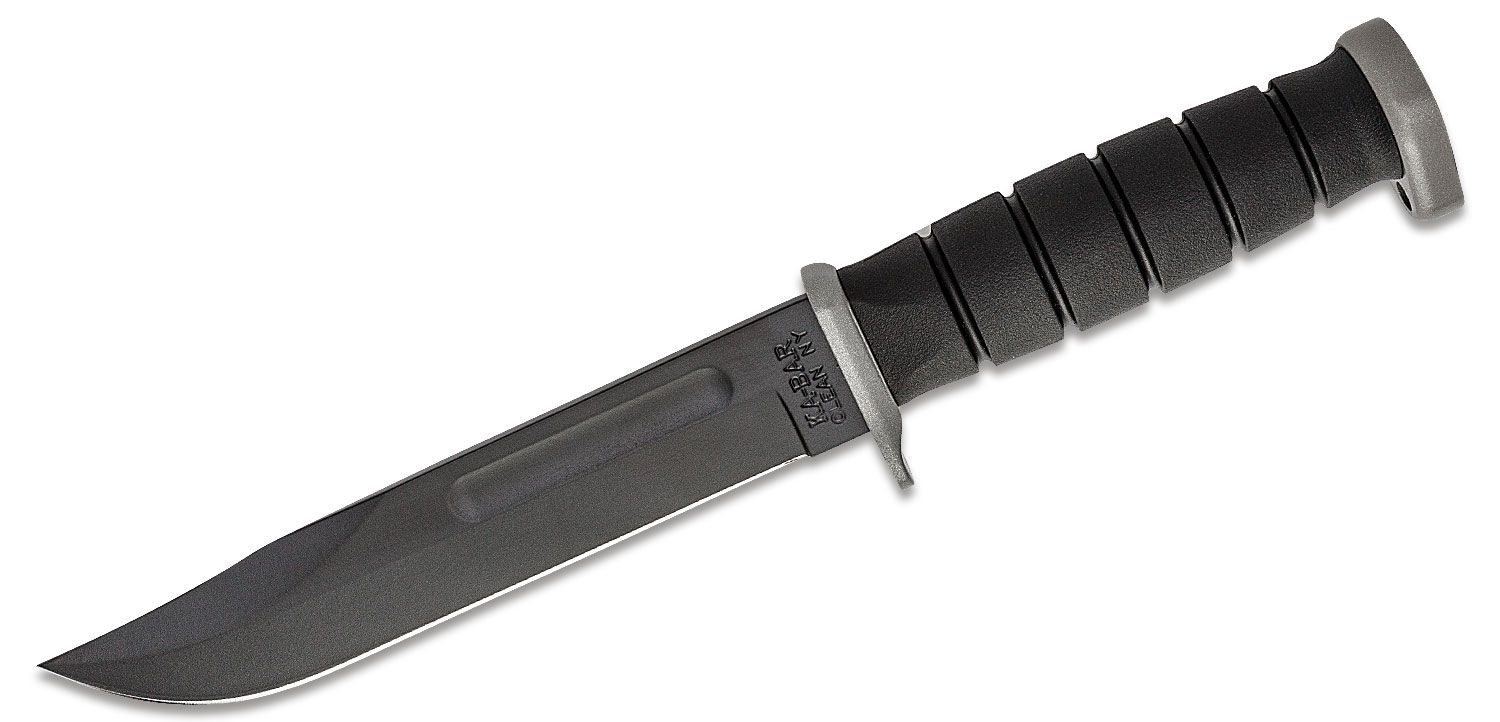
KA-BAR themselves offer an alternative: the D2 Extreme. It shares the same size and shape as the classic, but with some key differences. The blade is made of D2 tool steel, which offers better edge retention but is less tough than 1095 CV. The leather handle is replaced with a Kraton G handle, providing a more aggressive grip. Instead of a stamped metal crossguard, the D2 Extreme has a cast crossguard, mainly on the index finger side. The butt plate is extended and includes a lanyard hole. The D2 Extreme also comes with a more modern injection-molded sheath with a retention system, offering greater security.
World War II Era Alternatives
Randall Made Knives
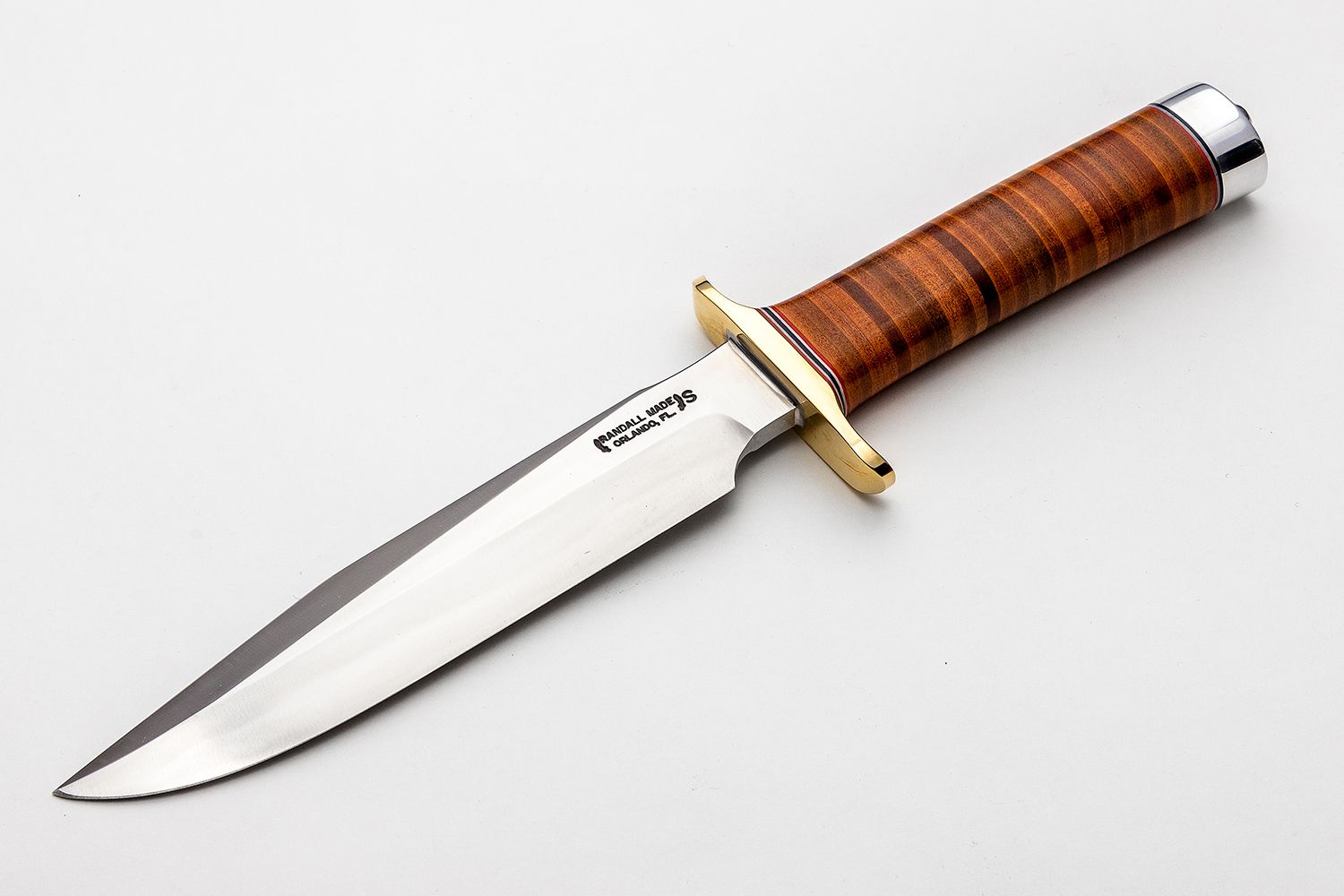
Stepping back in time, let’s look at some contemporaries of the KA-BAR from World War II. Manufactured by Randall Made Knives, the Model 1 is another iconic fighting knife from that era. Original versions would have used carbon steel, though stainless steel options are available today. Being a handmade knife, the Randall Model 1 has longer wait times than the mass-produced KA-BAR. However, it offers the same liveliness and similar construction. One key difference is the protruding attachment point at the back instead of a flat butt plate. A significant advantage of the Randall is the ricasso area, similar to classic Bowie knives. This provides space to grip the blade without touching the sharpened edge, which is helpful for removal if the knife gets stuck. The Randall also features a sharpened rear swedge, which wasn’t typically a factory feature on the KA-BAR.
Blackjack Model 7
If the Randall Model 1’s price and wait time are prohibitive, the Blackjack Model 7 offers a less expensive, though still pricier, alternative to the modern KA-BAR.
KA-BAR Ek Commando Model 5

Another contemporary worth considering is the Ek Commando Model 5. Interestingly, KA-BAR now owns the Ek brand and produces these knives. The modern versions are very similar in size to the classic KA-BAR, using the same 1095 CV carbon steel. However, the Ek Commando Model 5 has a full tang construction, unlike the KA-BAR’s stick tang. This, combined with the protruding tang at the back, was advertised as a tool for prying open crates. While you lose some hammering potential, you gain prying capability. The full tang also allowed for unique handle construction. Original versions used wood scales secured with poured lead rivets. If the handle became loose, you could simply hammer the rivets to tighten them. While modern versions use injection-molded handles with X-head fasteners, the full tang construction remains a differentiator. The sheath is also injection-molded, similar to the KA-BAR Extreme. Additionally, the crossguard on the thumb side is angled forward, making it easier to push off of.
Buck 119 Special
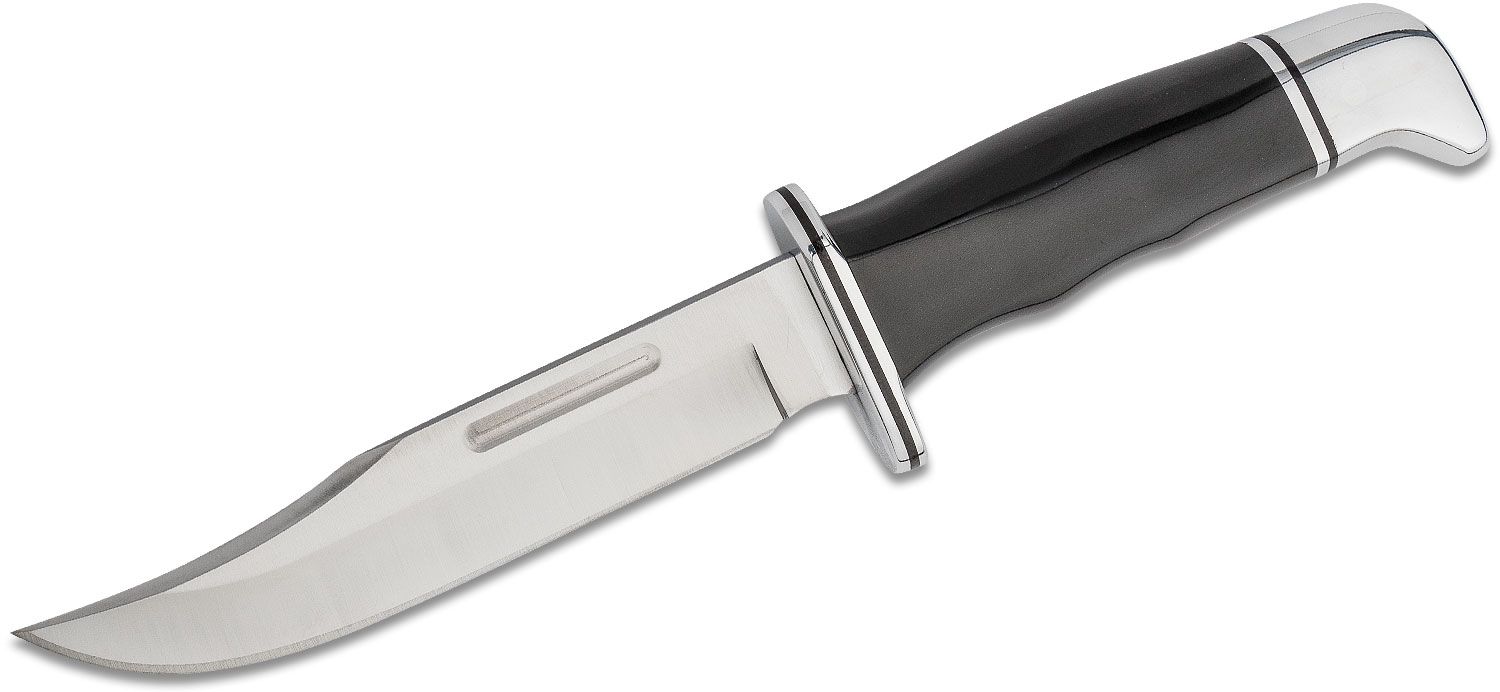
The Buck 119 Special is another knife designed in response to the call for arms during World War II. While shorter, with a 6-inch blade, it follows a similar design philosophy to the KA-BAR, being a lengthened version of existing hunting knives. Modern versions use 420HC stainless steel, and you can also find upgraded powder metallurgy versions. While original versions used Lucite handles, modern versions offer phenolic or micarta options. For similar options, check out Case Leather Hunter. The Buck 119’s handle is blockier than the oval KA-BAR handle, but still comfortable, and features a hook at the back to prevent slippage. The guard is more subtle on the thumb side, allowing for more detailed work. A key advantage of the Buck 119 is its more compact size, which can be a plus depending on your needs. It’s also more lively in hand. I would say one of the best features is its leather sheath, which has a retention strap with a snap placed on the backside, preventing it from snagging.
Bridging to Modern Designs: The Vietnam Era
SOG Bowie and SEAL Pup

Moving into the Vietnam era, the MacV SOG knife had a significant influence on combat knife design. SOG, the company, emerged later, but their version of the MacV SOG Bowie became incredibly popular. You can explore the full line of SOG Bowie and SEAL Pup at our store. The SOG Bowie, with its stacked leather handle and 6.5 or 7.5-inch blade, exudes an attitude and size that surpass the KA-BAR. The SEAL Pup offers a smaller alternative. The SOG Bowie also incorporates a finger groove, similar to classic Bowie knives, for easier removal from targets.
Modern Alternatives: Bracketing the KA-BAR
Affordable Options
Ontario SP1 Spec Plus Marine Combat
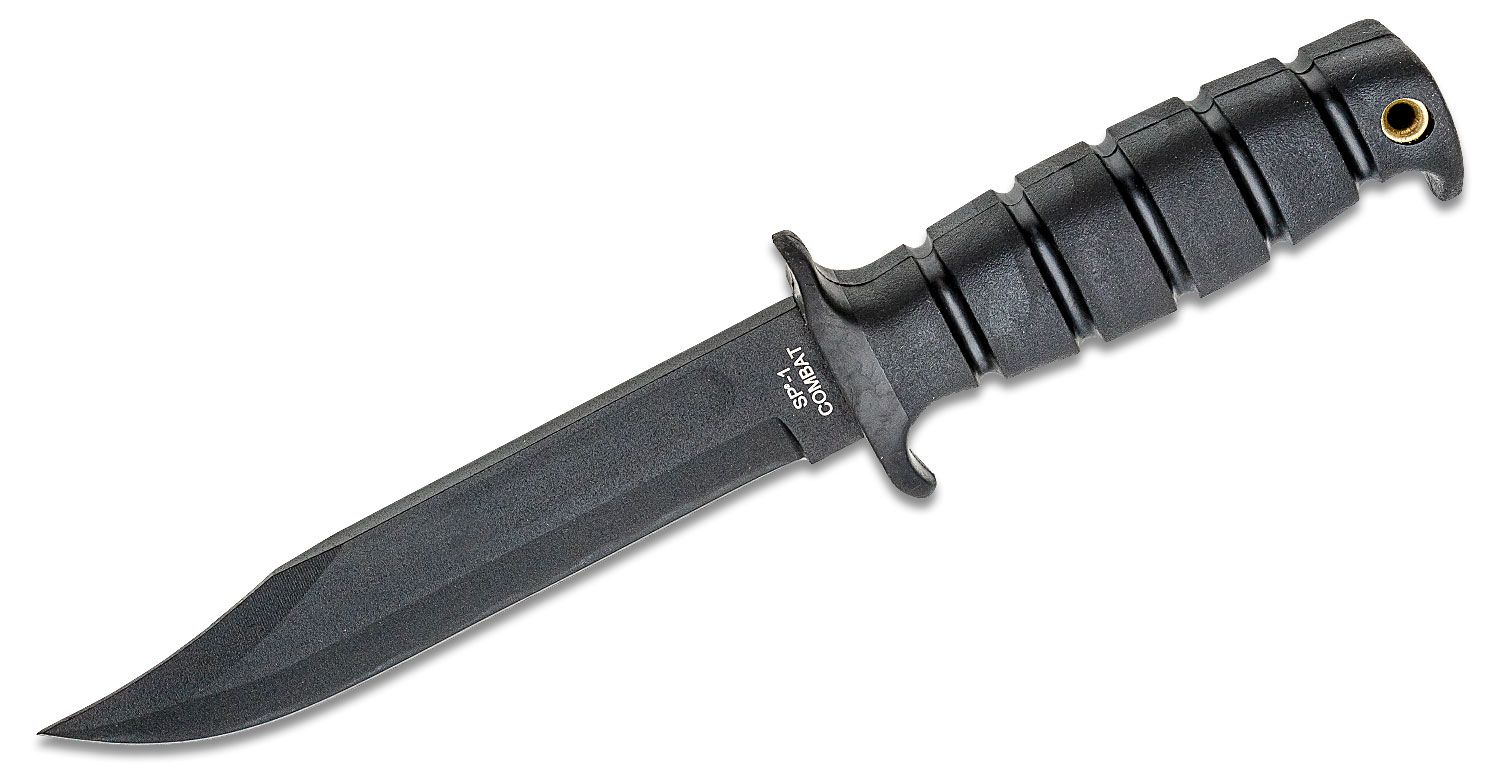
In today’s market, you can find numerous alternatives that bracket the KA-BAR’s performance and price. The Ontario SP1 Spec Plus Marine Combat offers a budget-friendly option. It’s made in the USA, and is offered at less than half the price of the KA-BAR. It features a carbon steel blade, ususally 1075 steel, and an injection-molded handle with a stylish crossguard. Despite its affordability, the Spec Plus series is known for its durability and value. It comes with a simple nylon sheath.
Mid-Range Options
Cold Steel Leatherneck
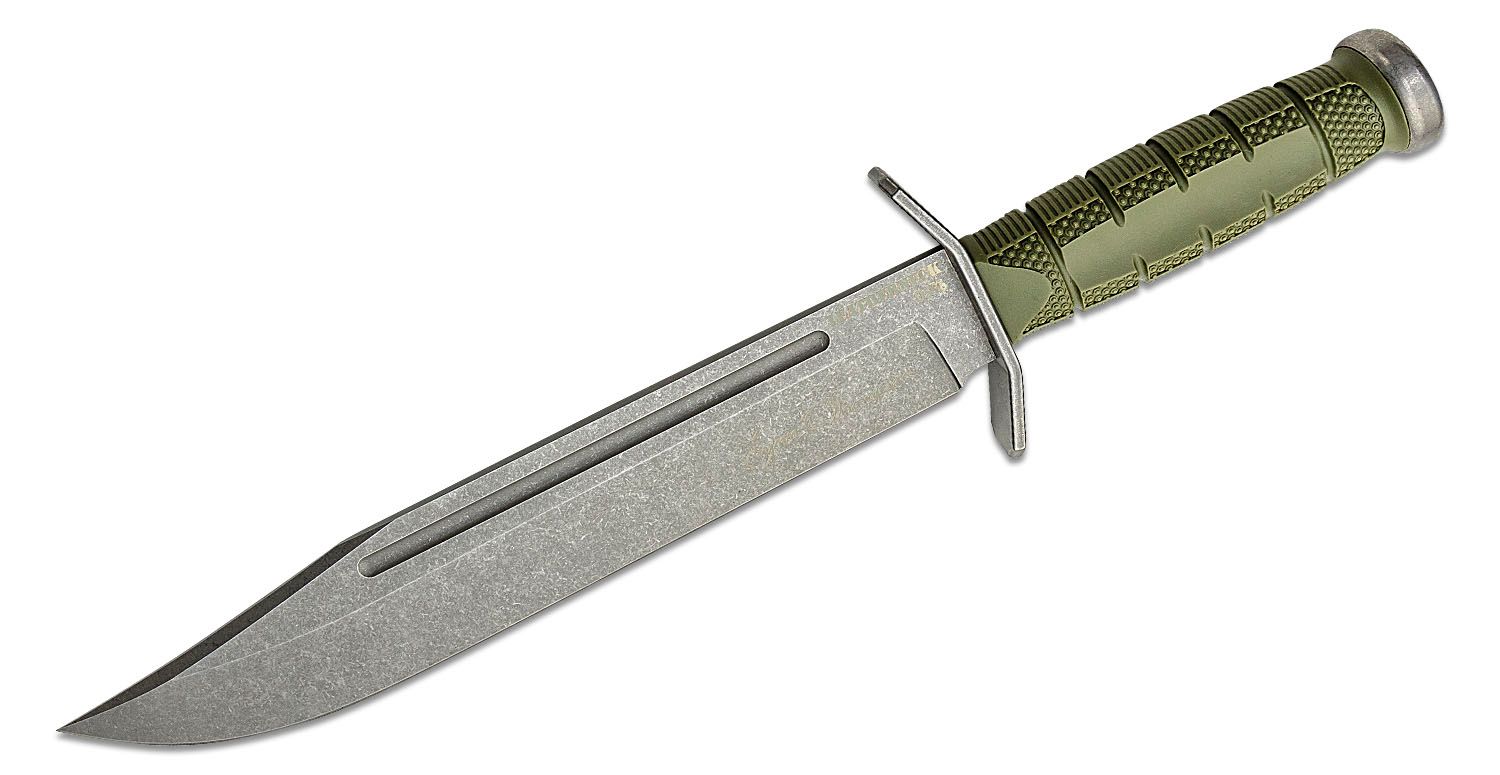
Stepping up in price, the Cold Steel Leatherneck offers a compelling alternative. It features a broader blade and handle than the KA-BAR, and for a slightly lower price, you get a German-made D2 steel blade for increased edge retention. The Leatherneck has a hollow grind, a departure from the KA-BAR’s saber height flat grind. The handle is rubberized with plenty of texture, and the full-length tang is thicker than the KA-BAR’s. The injection-molded sheath is well-designed and versatile.
High-End Options
Spartan Blades KA-BAR
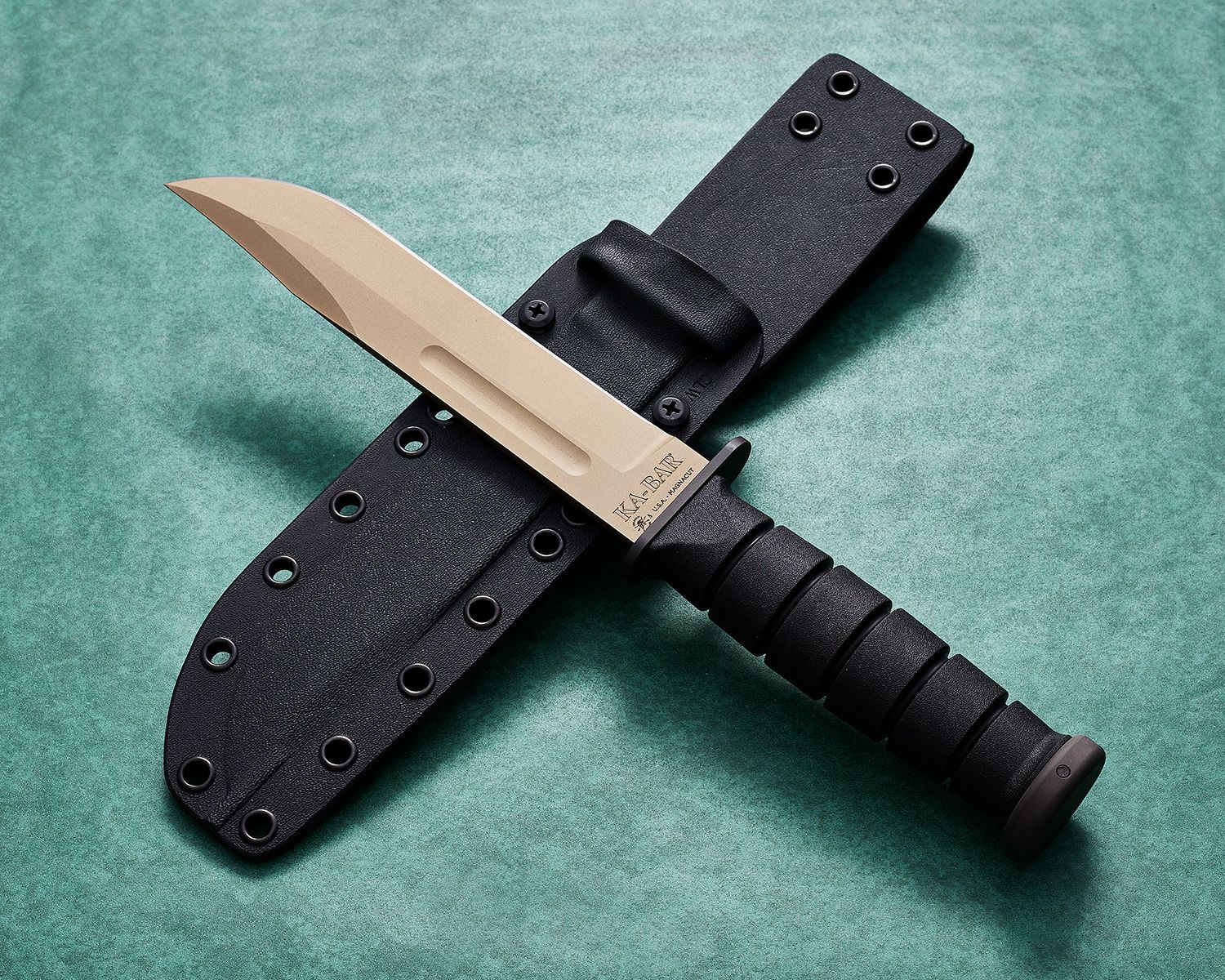
At the higher end, we have the Spartan Blades version of the KA-BAR. Because of a business relationship between the two companies, it’s marked with the KA-BAR name. The main difference is the blade steel: CPM-MagnaCut. This stainless steel offers an exceptional combination of toughness, edge retention, and corrosion resistance. It features a rubberized handle with the same oval shape and grooves as the classic KA-BAR. The sheath is black leather, similar to the standard KA-BAR sheath. This knife is a premium option, and comes with a premium price.
Modern Survival Knife Influenced Designs
KA-BAR Becker BK7
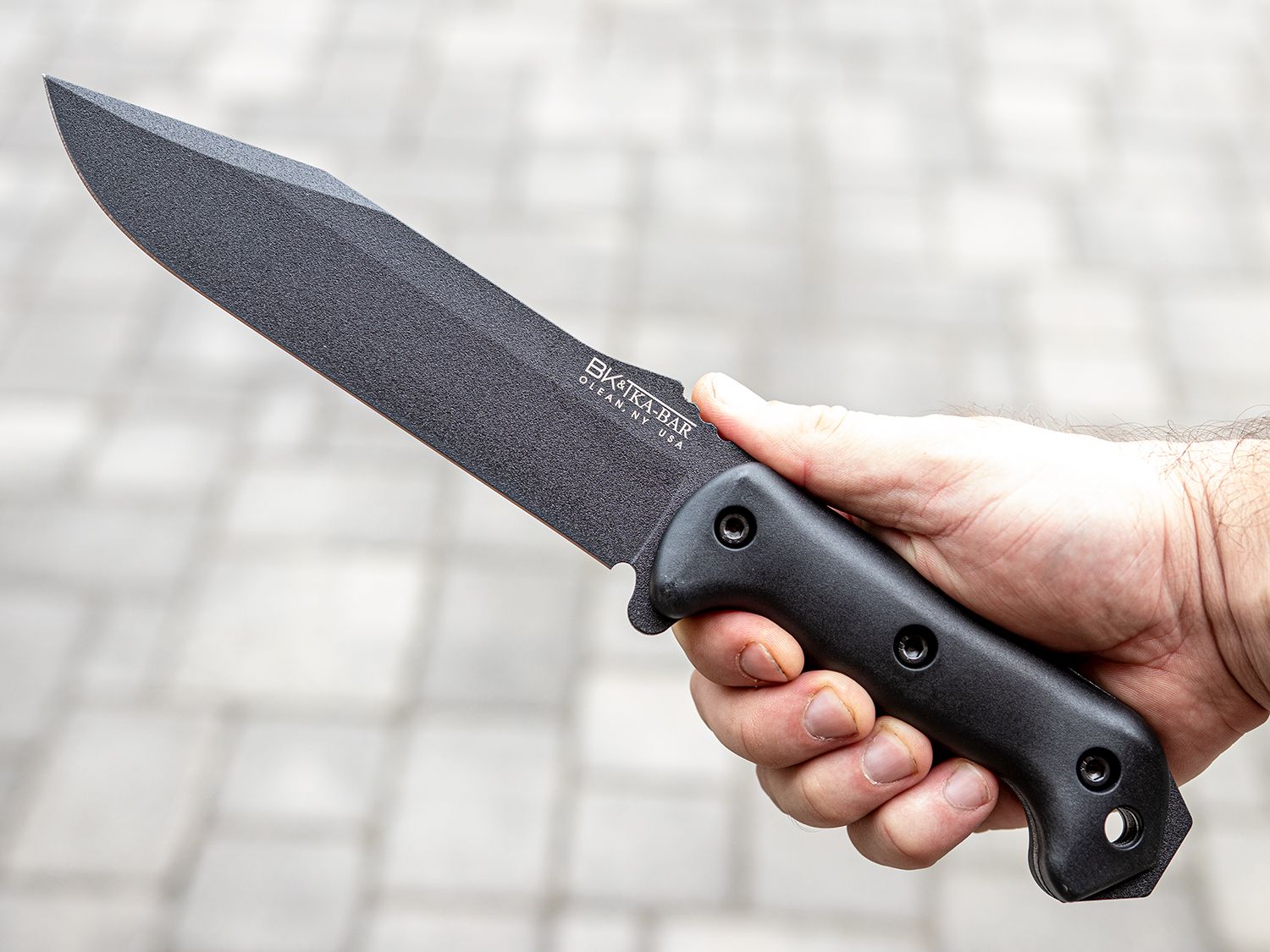
The KA-BAR Becker BK7 is an interesting design, meant to remake the classic KA-BAR in a Becker format. The Becker has a broader blade with a straight clip point and a high flat grind. The modern Becker knives are also produced by KA-BAR. Despite its full tang construction and thicker steel, the Becker is barely heavier than the classic KA-BAR. This is largely due to the injection-molded and hollowed handle. The Becker handle is exceptionally comfortable. The protruding full tang can be used for hammering, and the high flat grind increases the knife’s versatility. The sheath leans into modern survival style, with a retention strap and an extra pocket for storing accessories.
Halfbreed Blades Large Infantry
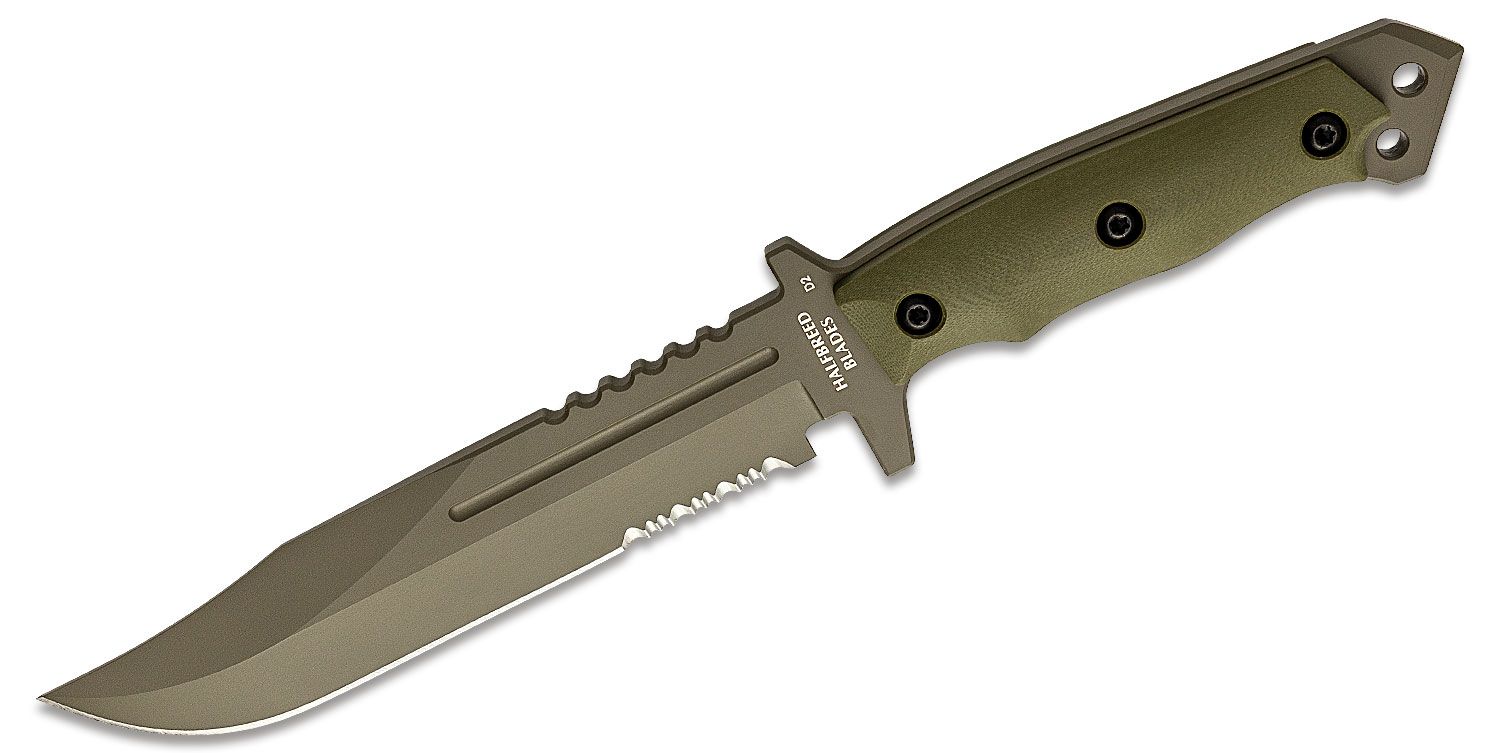
The Halfbreed Blades Large Infantry utilizes a similar bolted-on handle design, but with G10 scales. The blade closely resembles the classic KA-BAR. The knife is thicker and heavier than the KA-BAR, feeling more like a hammer. The blade steel is D2 with a hollow grind. The edges are chamfered for comfort, and the protruding tang is rounded off. The sheath is Kydex with a Tek-Lok attachment for versatile mounting.
TOPS US Combat Knife
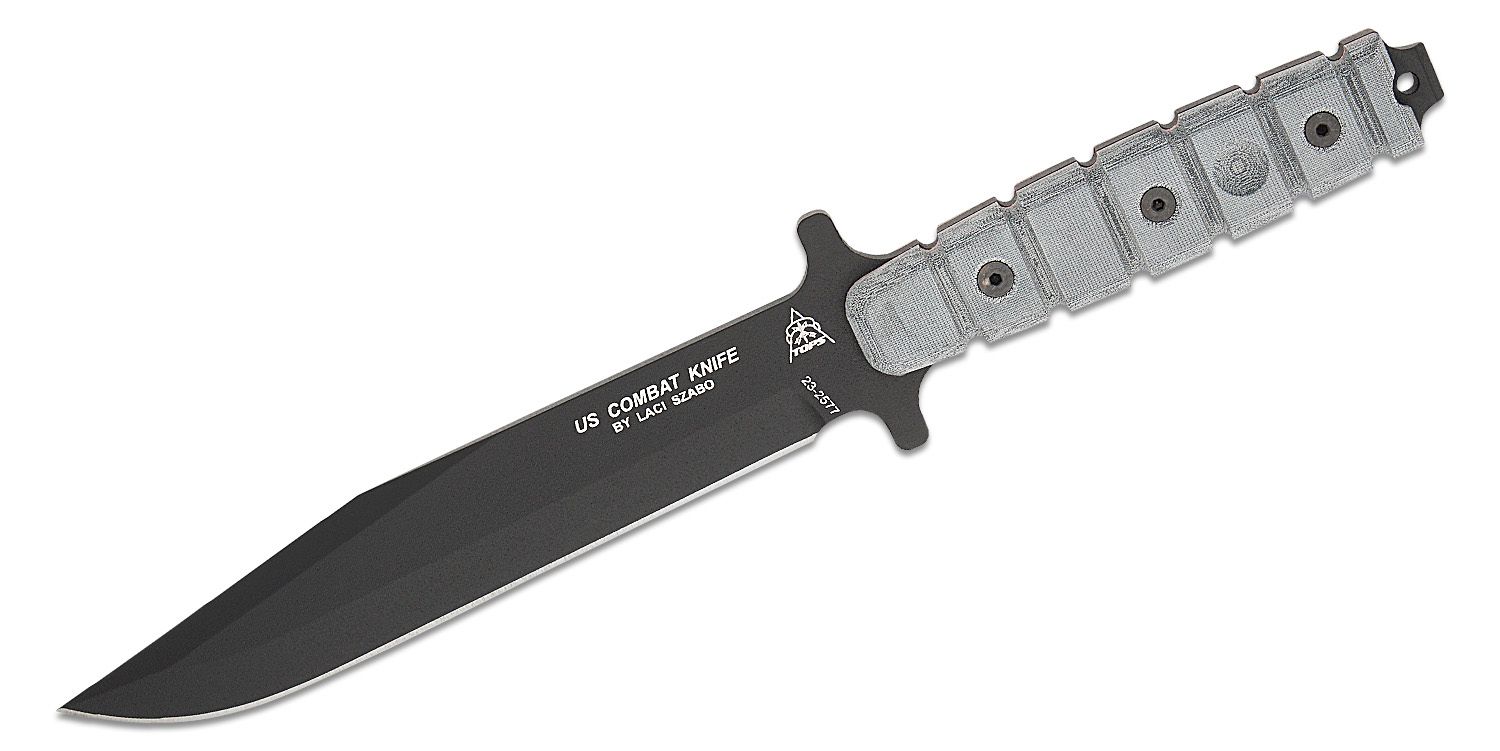
If the KA-BAR’s 7-inch blade isn’t enough, the TOPS US Combat Knife adds another half-inch. This knife is clearly influenced by the KA-BAR, but with a thicker, quarter-inch blade. It’s not as agile as the KA-BAR, but feels incredibly strong. The 1095 carbon steel blade is very tough. The guard is part of the blade itself, and the handles are linen micarta with a grooved texture. It also features a bow drill divot for primitive fire starting. The sheath is similar to the Becker’s, with MOLLE compatibility and an extra pocket.
Fallkniven NL2 Odin
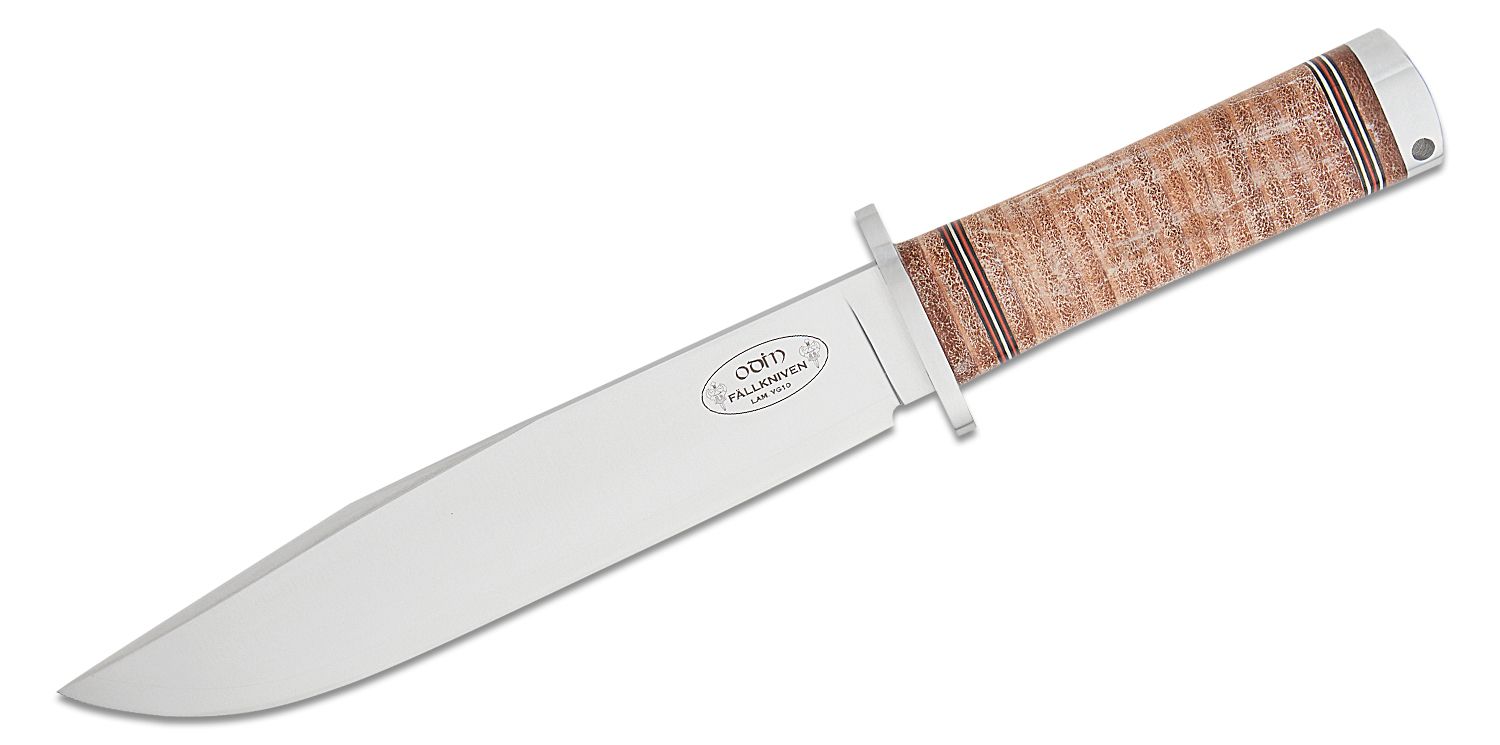
For a more premium option, consider the Fallkniven NL2 Odin. This Northern Light Bowie knife has a nearly 8-inch blade and a significantly higher price tag. While probably not a frontline carry, it leans into the combat style with its prominent guard. The blade is thick, laminated steel with a VG10 core and a convex grind. The handle is stacked leather in an oval shape. The knife comes with a very nice leather sheath.
KA-BAR Made Alternatives
Spartan Professional Grade Harsey Fighter
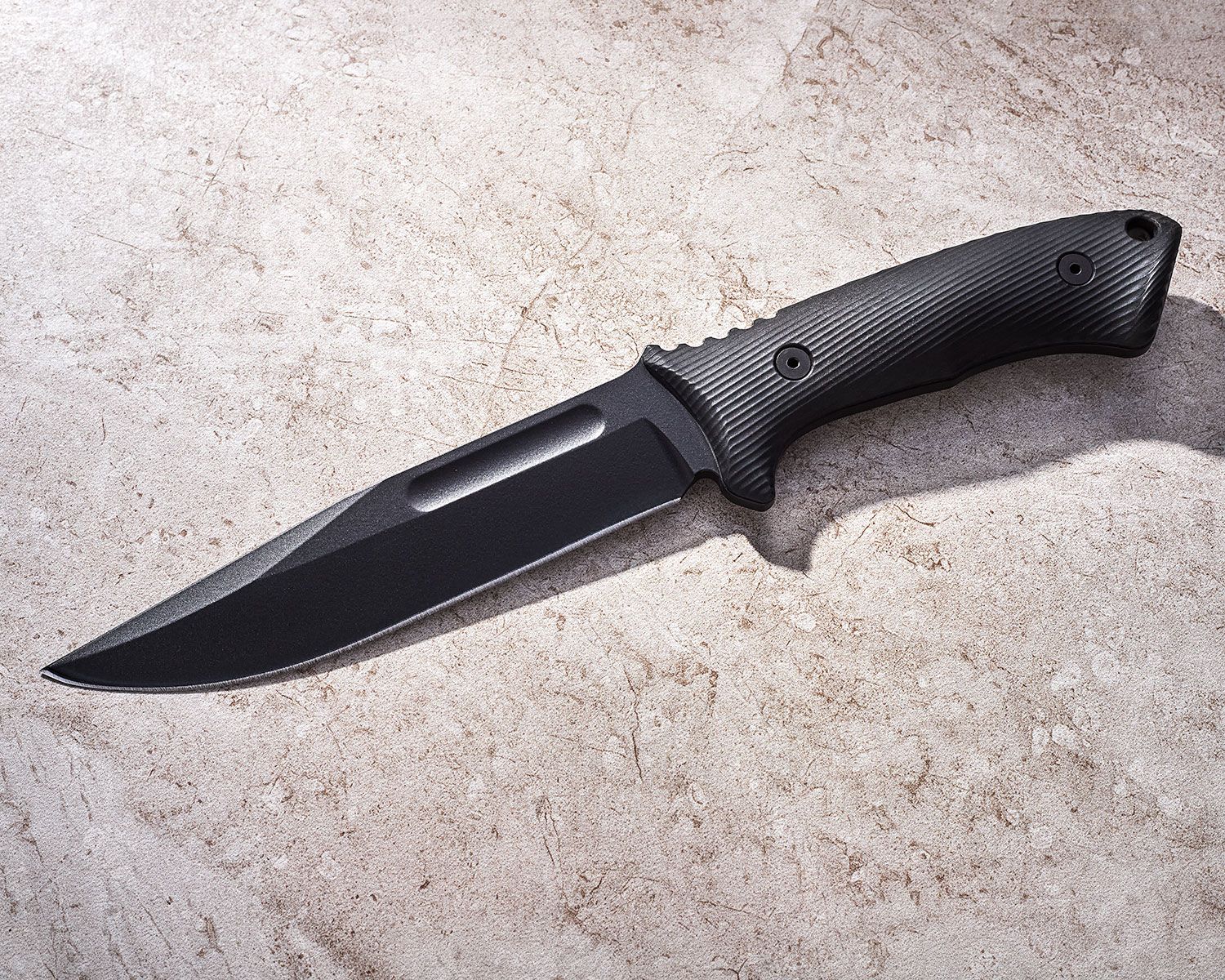
KA-BAR also produces the Spartan Professional Grade Harsey series. With a blade just over 6 inches, the Fighter is shorter than the KA-BAR. However, the difference in hand isn’t as significant. The blade steel is 1095 CV, and the handle is injection-molded and bolted onto the full tang. The handle is incredibly comfortable. While the Harsey Fighter may not be ideal for those with very large hands, it offers a manageable size and excellent ergonomics. The injection-molded sheath has a safety button for secure retention.
Outside the Box Alternatives
Condor Enduro

Stepping outside the traditional KA-BAR mold, the Condor Enduro offers a unique alternative. With a roughly 7-inch blade and a slightly tanto-ized shape, it still lives in the same neighborhood as the KA-BAR. The blade steel is 420HC. The real star of the design, however, is the paper micarta handle with a high polish and excellent contour. Despite feeling heavier, it retains the agility of the classic KA-BAR. The price reflects the premium Kydex sheath.
Hogue EX-F01
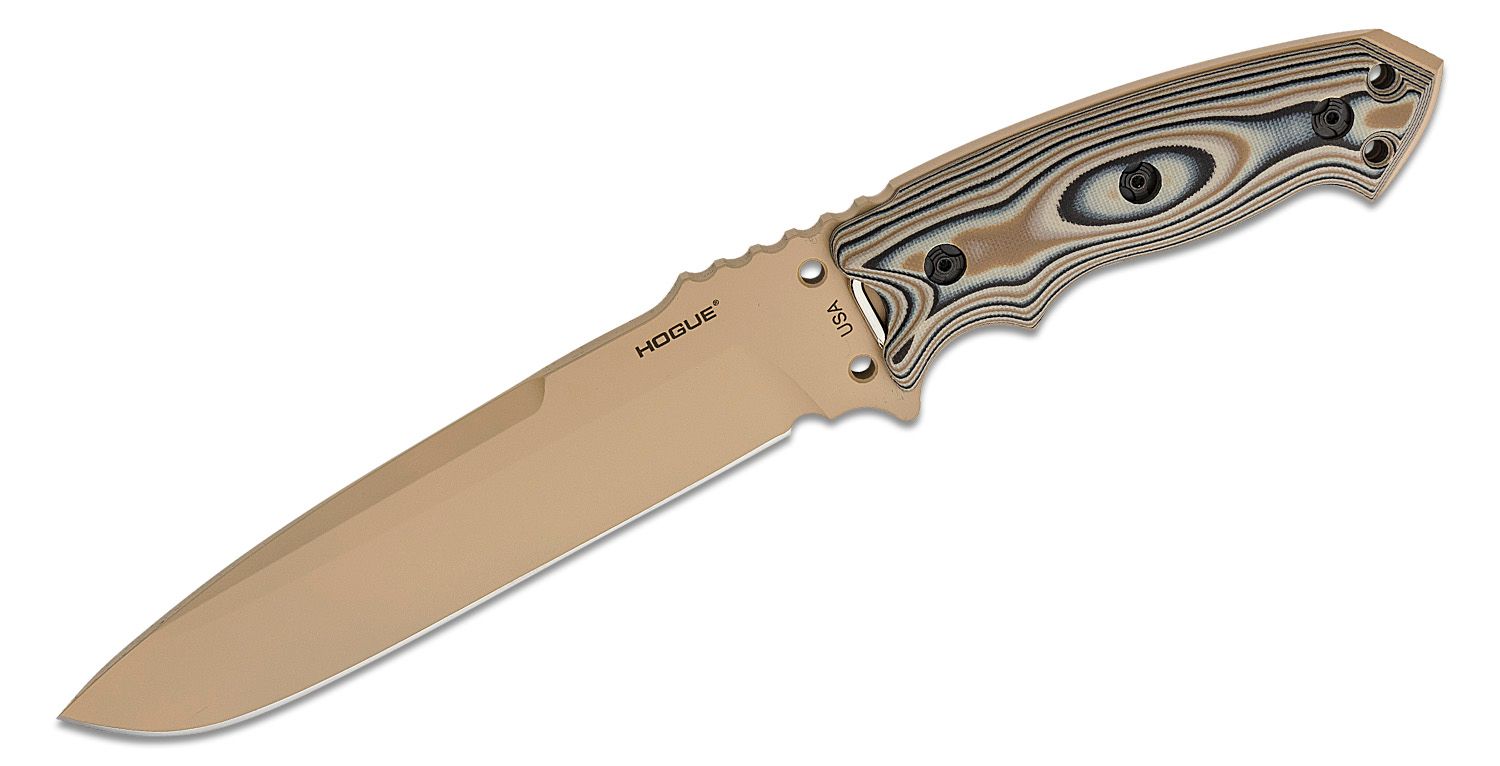
Finally, for a modern combat knife design, we have the Hogue EX-F01. With an A2 tool steel, drop point blade, it breaks from the classic clip point style. The knife features a 7-inch blade and a nearly quarter-inch thickness. It’s designed by combat veteran Allen Elishewitz. The contoured G10 handles are comfortable, and the protruding tang provides a striking point. A unique feature is the integrated driver for adjusting the scale tension.
Conclusion: The Verdict – Does Anything Beat the Icon?
So, we have several knives and each one has its trade-offs. Now the ultimate question remains: Does any of these knives truly beat the iconic KA-BAR? Or is its legendary status unassailable?
Ready to explore these alternatives further? Head over to KA-BAR Knives Collection and don’t forget to sign up for our KnifeREWARDS program to earn points on your purchase!